More than 1b animals dead, how to help those who survived
It is estimated that 1.25 billion animals — and even fish — have been killed by the savage bushfires around the country. Now environmentalists are looking at how to get food to those who survived. PRACTICAL TIPS FOR HOW YOU CAN HELP.
NSW
Don't miss out on the headlines from NSW. Followed categories will be added to My News.
Environmentalists want fresh vegetables dropped over national parks from planes and helicopters to save native animals that escaped the flames but are trapped in charred bushland or tiny islands of greenery and starving to death.
Wildlife rescue volunteers are anxious to feed starving animals, but have been locked out of fire grounds on the ground for their own safety so they believe getting up into the air is the only option.
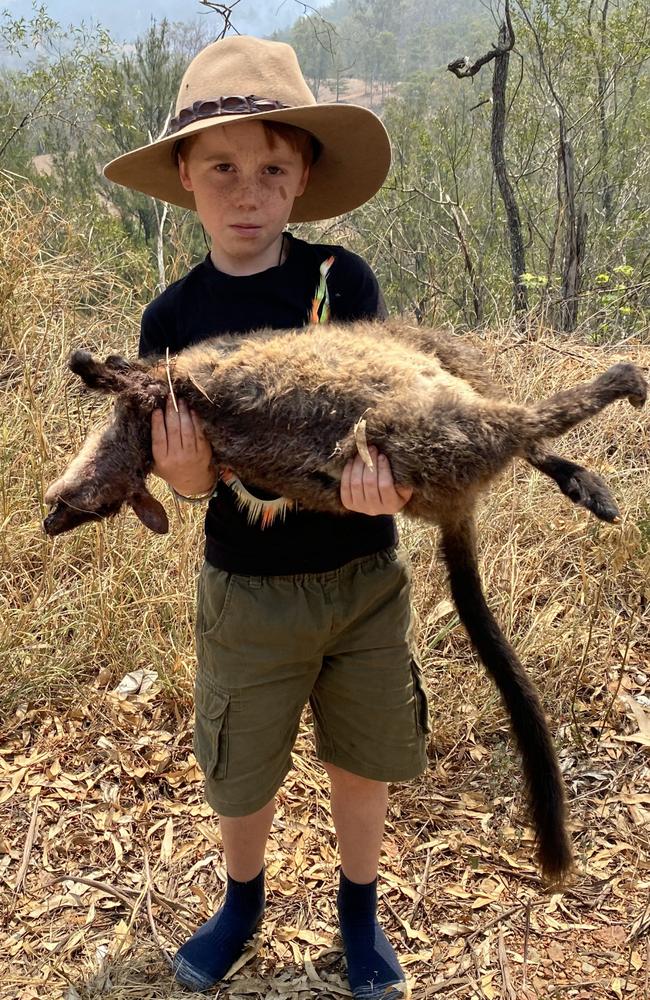
According to 2010 NSW Australian of the Year and action group DoSomething boss Jon Dee, sweet potato, carrots and leafy greens need to be distributed from aircraft above the Blue Mountains, and then possibly other locations, as soon as possible.
“From speaking to experts, we need to do food drops out of a helicopter or plane,” Mr Dee said.
MORE NEWS
No bail for pair accused of looting business hit by bushfires
GoPro founder’s awesome Barnesy connection
Meghan and Harry’s financial independence farce
“In the Blue Mountains wallabies, kangaroos, koalas, reptiles and birds have survived in pockets, but unfortunately volunteers who want to help can’t get in for safety reasons.
“The animals are like us; if they don’t get water or food soon they will lose energy and starve quickly.”
Environmentalists said the idea demanded immediate and serious consideration before the fire crisis claimed even more animals, with some groups even offering to bankroll the expedition.
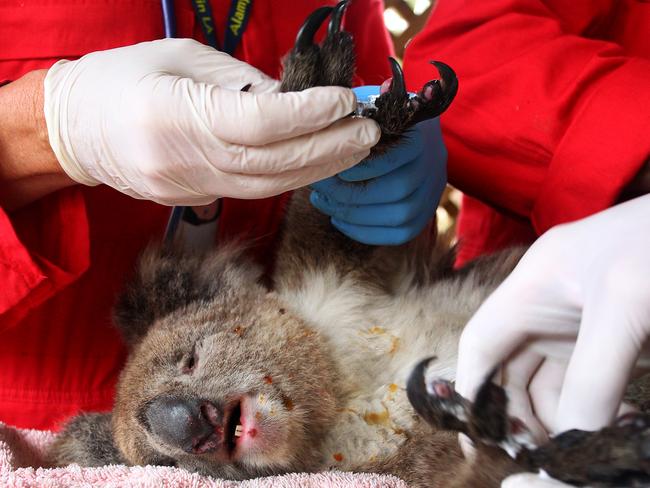
“Once the immediate crisis is over we would hope governments would prioritise getting food to surviving animals by whatever means possible,” Animals Australia director Lyn White said.
“As we have in Victoria, Animals Australia would be prepared to provide financial support to help make this happen.”
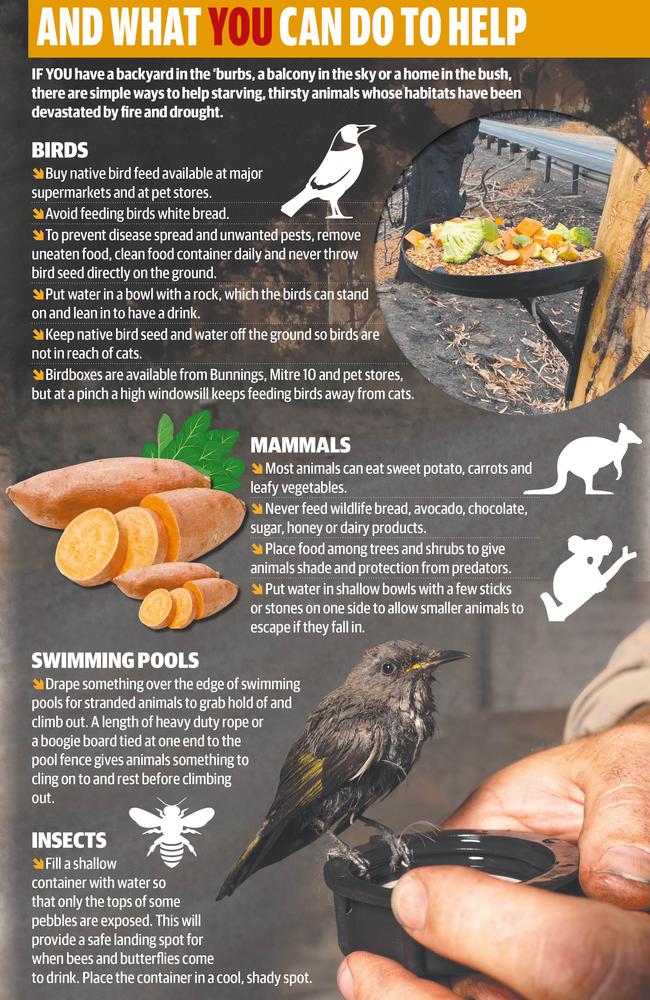
One wildlife rescue group licensed by NSW National Parks and Wildlife Service to rehabilitate and release sick, injured and orphaned native animals called the aerial offensive a “fantastic idea”.
“Given the dangers of allowing people into the fire zones, we do need an alternative and food drops sound like a fantastic idea to be supported by government because it’s not something we have the assets or facilities to do ourselves,” Sydney Metropolitan Wildlife Service southwest branch vice-chairman Jamie Illistom said.
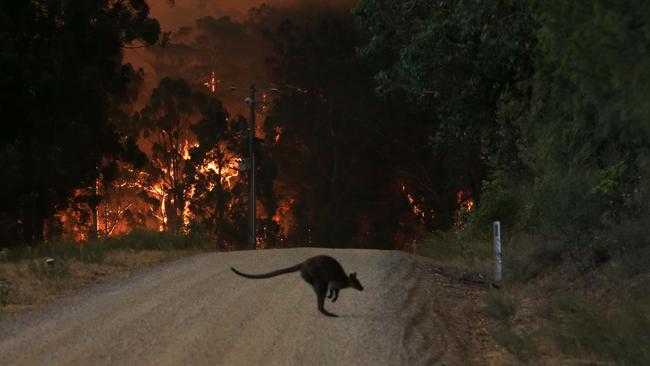
Conservation group Aussie Ark, which focuses its efforts on threatened Australian species, has already been dropping sweet potato in the bush to sustain fire-affected rock wallabies.
Aussie Ark founder Tim Faulkner has reported the food drops have shown encouraging results in rock wallaby populations devastated by the bushfires on the mid-north coast.
An estimated 1.25 billion animals have died in bushfires across the country, including thousands of koalas, kangaroos, wallabies, kookaburras, cockatoos and honeyeaters, according to World Wildlife Fund (WWF) Australia.
The WWF has estimated more than 8000 koalas have died and the number continues to rise, which is described as “devastating” and “unprecedented”.
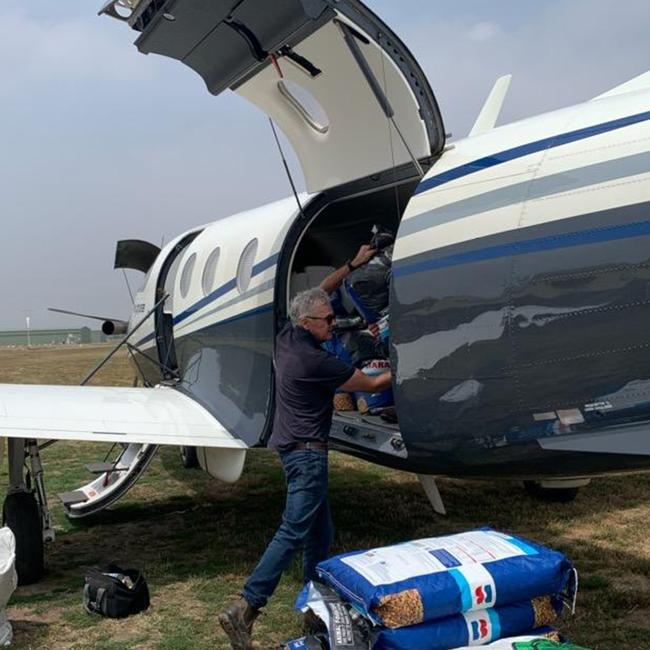
“Dropping food from the air is an interesting idea but there would need to be careful planning informed by scientific experts for each target species to determine the type of food and location for drops,” WWF Australia Head of Healthy Land and Seascapes Darren Grover said.
“You would need to identify areas where native animals may have survived and any food drops would need to be well away from roads.”
The government would not be drawn on whether it supported plans to drop fruit and vegetables from the air, other than to say it had already provided $1 million in emergency funding to support wildlife rehabilitation and more needed to be done.
“In parallel with fighting the ongoing fires, an emergency recovery plan to protect and restore wildlife populations is being developed,” the spokesman said.
“The immediate priority remains the suppression and control of existing fires to protect life, property and remaining habitat in our national parks and across the state.”
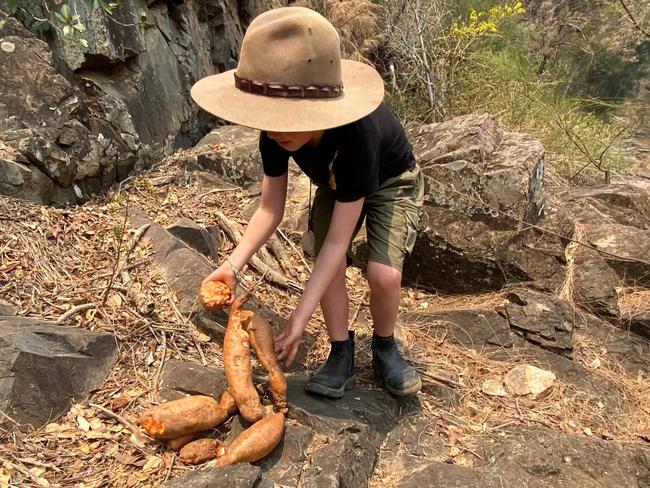
THE FIRES ARE EVEN KILLING FISH
Not even fish are safe from the fires.
There has been a massive fish kill in at least one NSW south coast saltwater lake caused by ash and soot clogging the water.
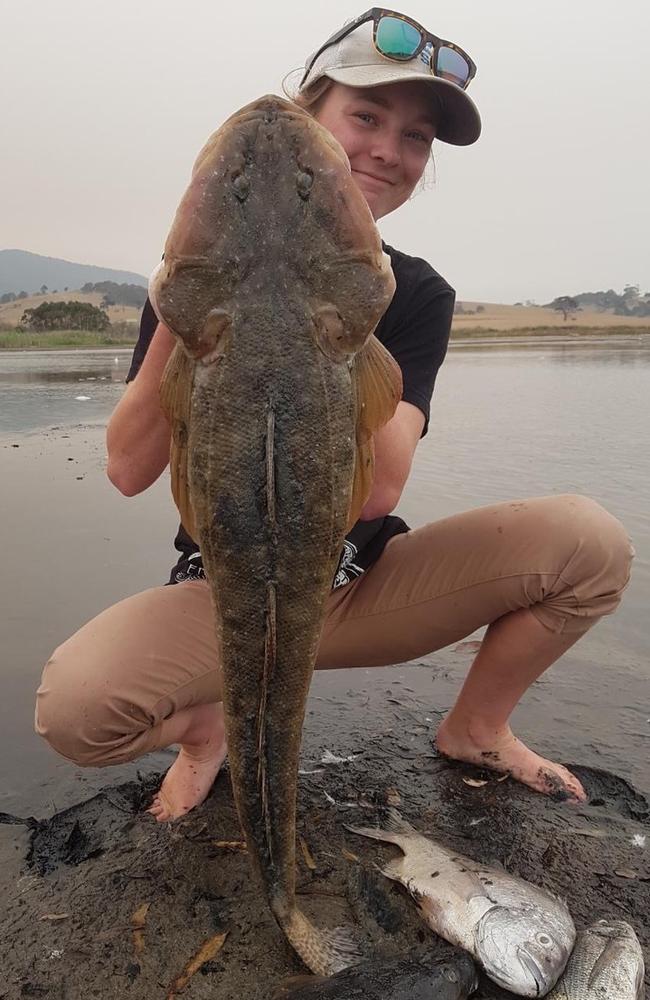
Georgia Poyner, 19, was confronted with hundreds of dead fish when she attempted to wet a line at Tilba Lake, south of Narooma.
“The banks were just filled with hundreds of dead fish, it was like a lot of them had tried to beach themselves to get away from the ash,” Ms Poyner, who documented the kill on camera, told The Sunday Telegraph.
When large quantities of ash are washed into a lake or river, fish suffocate, suffering a similar fate to when an algal bloom occurs.
Ms Poyner, a keen angler, said she counted more than 500 dead whiting, luderick, bream, mullet, dusky flathead and eels on the lake shores.
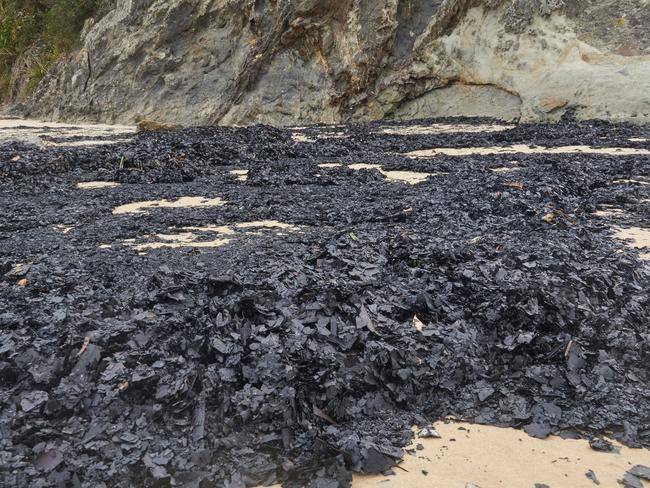
“I tried to count how many of each species were dead but once I got to 100 of each I stopped counting,” she said.
“The fish were huge, some of the mullet were around three or four kilos and I picked up a flathead that was 92cm.”
Ms Poyner cannot see the lake system recovering anytime soon, predicting widespread and heavy rainfall will only cause more problems.
“Rain isn’t the answer in this situation because if we get flooding that will just increase the run of ash into the water systems,” she said.
Saltwater lakes are scattered along the NSW south coast, and in drought are often closed off from the sea, making ash run-off even more dangerous.
KANGAROO ISLAND’S THREATENED SPECIES BATTLE TO SURVIVE
Kangaroo Island’s threatened animal species, already fighting for survival, are now in even more danger with South Australia’s “conservation gem” decimated by fire.
Environmentalists are counting the cost of blazes which have ravaged half the island, including much of its forest areas, with Flinders Chase National Park virtually destroyed. Questions have been raised over whether some species can weather the firestorm they have endured.
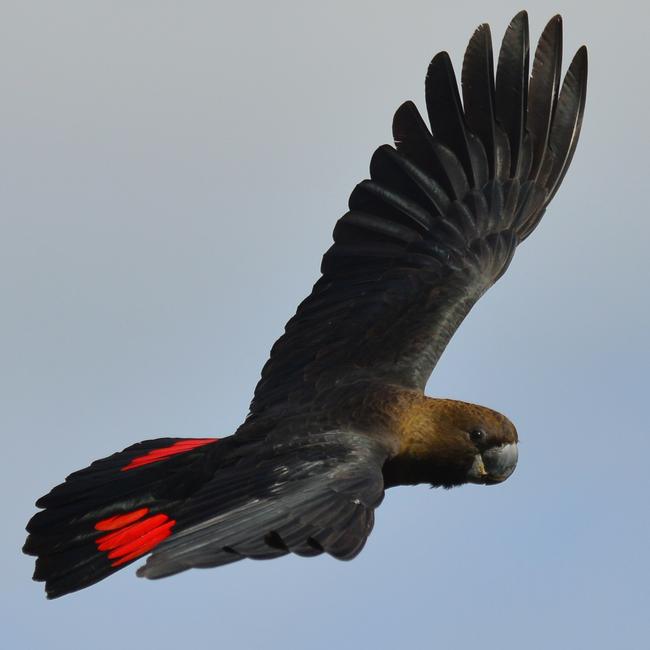
Two of the species of most concern are the Kangaroo Island dunnart, with a population of only about 300 animals before the fires, and the region’s 370 glossy black-cockatoos.
Flinders University Professor Corey Bradshaw said while the cockatoos may have been able to escape, much of their breeding and foraging habitat had been destroyed.
“They were just hanging in there anyway and this might knock them down into a decline trajectory,” Prof Bradshaw said.
“Kangaroo Island had one of the largest intact forests in all of the state — it’s pretty much a gem from a conservation perspective … (It’s) really a tragedy because it was one of our last remaining havens.”
The dunnart was another species which, if it had suffered large population losses, was a step closer to extinction, Prof Bradshaw said.
Wild cats could present another problem, as animals in fire-ravaged areas were easier to pick off.
